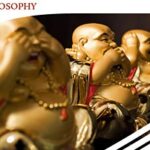Neural Encoding of Acupuncture Needling Sensation
Kristen Sparrow • January 19, 2014


I like this study because it’s very precise. It also uses strictly deqi as a stimulation technique. This is part of a larger study I’m doing to come up with new models for acupuncture treatment
Evidence-Based Complementary and Alternative Medicine
Volume 2013 (2013), Article ID 483105, 15 pages
http://dx.doi.org/10.1155/2013/483105
Neural Encoding of Acupuncture Needling Sensations: Evidence from a fMRI Study
Xiaoling Wang,1,2 Suk-Tak Chan,2 Jiliang Fang,1,2
1Department of Radiology, Guang An Men Hospital, China Academy of Chinese Medical Sciences, Beijing 100053, China
2Athinoula A. Martinos Center for Biomedical Imaging, Department of Radiology, Massachusetts General Hospital and Harvard Medical School, Charlestown, MA 02129, USA
Received 22 February 2013; Revised 7 July 2013; Accepted 14 July 2013
Academic Editor: Lijun Bai
Abstract
Deqi response, a psychophysical response characterized by a spectrum of different needling sensations, is essential for Chinese acupuncture clinical efficacy. Previous neuroimaging research works have investigated the neural correlates of an overall deqi response by summating the scores of different needling sensations. However, the roles of individual sensations in brain activity and how they interact with each other remain to be clarified. In this study, we applied fMRI to investigate the neural correlates of individual components of deqi during acupuncture on the right LV3 (Taichong) acupoint. We selected a subset of deqi responses, namely, pressure, heaviness, fullness, numbness, and tingling. Using the individual components of deqi of different subjects as covariates in the analysis of percentage change of bold signal, pressure was found to be a striking sensation, contributing to most of negative activation of a limbic-paralimbic-neocortical network (LPNN). The similar or opposite neural activity in the heavily overlapping regions is found to be responding to different needling sensations, including bilateral LPNN, right orbitofrontal cortex, and bilateral posterior parietal cortex. These findings provide the neuroimaging evidence of how the individual needle sensations interact in the brain, showing that the modulatory effects of different needling sensations contribute to acupuncture modulations of LPNN network.

